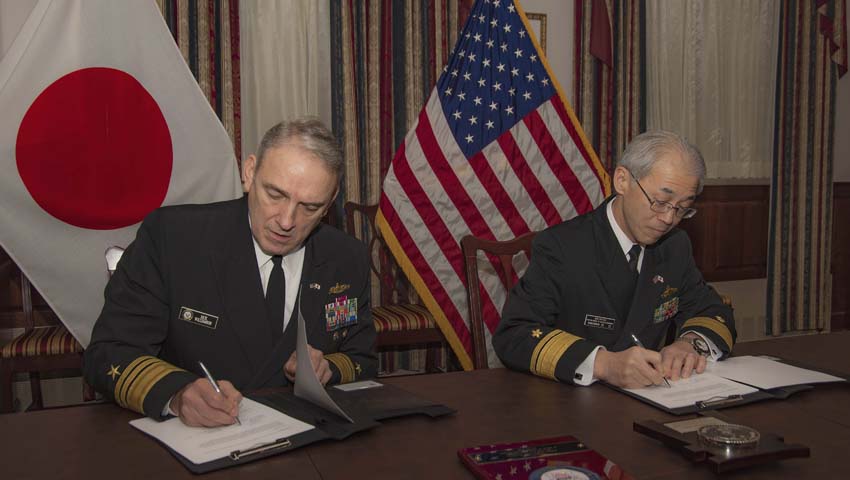The US Navy and Japan Maritime Self-Defence Force have signed a revised framework for a strategic approach to integrated logistics in support of shared areas of concern such as potential threats, disaster relief and other peacetime operations.
Vice Admiral Rick Williamson, US deputy chief of naval operations for fleet readiness and logistics, and Rear Admiral Masatomi Dairiki, director general of the logistics department of the Maritime Support Office, JMSDF, have signed the revised framework at the Pentagon on 5 February.
The “Japanese Maritime Self Defence Force (JMSDF)/US Navy (USN) Logistics Interoperability and Integration Strategic Framework” establishes a bilateral, strategic approach to integrated logistics in support of shared areas of concern such as potential threats, humanitarian assistance/disaster relief, and other peacetime operations.
The framework aims to create solutions for using limited resources as effectively as possible and reduce obstacles in meeting operational commanders’ requirements.
Efforts outlined in the framework underpin US Chief of Naval Operations Admiral Mike Gilday’s fragmentary order 01/2019, imperative for building on alliances and logistics partnerships.
VADM Williamson said, “As the world changes, it is vital to have good partners, and this agreement will help strengthen the ties between our two navies. It has often been said that blunting force wins battles – but logistics wins wars.”
The framework facilitates collaboration across all levels of logistics planning, from tactical to operational, as well as innovative and strategic approaches for the future.
Some initial target areas include exercises and war games; fuel distribution, ordnance and food stocks; acquisition agreements; and the possibility of additional personnel exchanges.
Staff will also explore opportunities to share logistics information, improve radiological screening procedures and integrate emerging technologies such as additive manufacturing and unmanned systems that can enhance lethality and sustainability.
Following the signing event and the exchange of commemorative plaques, the two leaders discussed additional topics relevant to the five maritime logistics sustainment vectors (rearm, resupply, repair, revive and refuel), ranging from Landing Craft Air Cushion operations to maintenance of US Navy vessels in Japanese shipyards, to future replenishment at sea operations between the two nations.
RADM Dairiki added, “We welcome this opportunity for enhanced cooperation with the US Navy. We look forward to working together to improve our logistics interoperability.”


